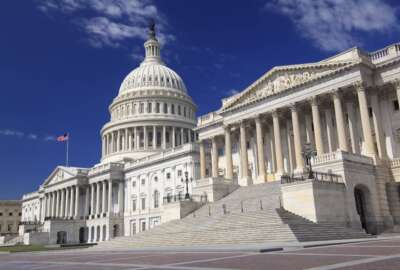Biden issues pay plan with 2% federal pay raise recommendation
Biden’s 2% federal pay raise plan accounts for a 1.7% across-the-board increase, plus an average 0.3% locality pay adjustment, for most civilian employees.
Civilian federal employees are now almost sure to see a 2% federal pay raise in 2025, after President Joe Biden formally announced his plans for next year’s salary hike.
Though nothing will be truly official until Biden signs an executive order enacting next year’s federal pay raise, the alternative pay plan sent to congressional leaders Friday was the next major step in the process toward finalizing 2025 pay rates for most General Schedule employees.
The federal pay raise percentage, according to the pay plan, accounts for a 1.7% across-the-board increase, as well as an average of a 0.3% locality pay adjustment, totaling to 2% on average. The 0.3% locality pay percentage is slightly less than the typical 0.5% adjustment seen in recent years.
Biden’s submission of the alternative pay plan means the 2% federal pay raise will become official for 2025 unless Congress decides to enact a different raise amount in the coming months. The odds of congressional action, however, appear low — lawmakers have so far remained silent on the raise in the appropriations process, indicating their alignment with the president’s proposal from the budget request.
If finalized, the 2025 federal pay raise would be the smallest annual raise enacted during the Biden administration. It would also follow the 5.2% increase feds received for 2024. In the pay plan, Biden pointed to the need for support of the civilian federal workforce, while acknowledging “fiscal constraints.”
“We must attract, recruit and retain a skilled workforce with fair compensation in order to keep our government running, deliver services and meet our nation’s challenges today and tomorrow,” Biden wrote. “This alternative pay plan decision will continue to allow the federal government to employ a well‑qualified federal workforce on behalf of the American people, acknowledging wage growth in the labor market and fiscal constraints.”
The proposal of a 2% federal pay raise in the fiscal 2025 budget request received criticism from several federal unions and other employee organizations who have pushed instead for a larger raise amount.
The planned 2% federal pay raise also falls short of what some lawmakers were hoping for in 2025. In January, Rep. Gerry Connolly (D-Va.) and Sen. Brian Schatz (D-Hawaii) reintroduced the Federal Adjustment of Income Rates (FAIR) Act. The bicameral bill aiming to give feds a 7.4% average pay raise next year.
Democrats have reintroduced the FAIR Act every year for about a decade, but to date, Congress has never passed any version of the bill. This year’s legislation pushes for a 4% across-the-board raise, plus an average of a 3.4% locality pay adjustment.
On the other hand, some agencies have felt pressure under current spending caps while still needing to implement the 5.2% federal pay raise that began in January 2024.
By the Federal Salary Council’s most recent estimate, federal employees earn on average about 27.5% less in wages than those with similar positions in the private sector. The pay disparity has increased by more than 3% since the council’s previous report of a 24% wage gap during 2022.
A data analysis that Federal News Network conducted in 2023 also shows that for more than a decade, federal pay raises haven’t kept pace with rising salaries in the private sector.
Although the 1990 Federal Employees Pay Comparability Act (FEPCA) technically authorizes the funding needed to reduce the federal versus non-federal wage gap down to 5%, no president has fully adopted FEPCA since 1994. Instead, for the last 30 years, presidents have chosen to deviate from FEPCA and issue an “alternative pay plan.” The only catch is that the president must inform Congress of those intentions by Aug. 31, as Biden did with his pay plan on Friday.
After decades of alternative pay plans, the President’s Pay Agent estimates that it would cost $22 billion to close the wage gap between the federal and non-federal sectors.
Annual federal pay raises take effect in the first pay period in January and do not become official until the president signs an executive order enacting the raise. Usually, that happens in mid-to-late December.
Copyright © 2025 Federal News Network. All rights reserved. This website is not intended for users located within the European Economic Area.
Drew Friedman is a workforce, pay and benefits reporter for Federal News Network.
Follow @dfriedmanWFED






